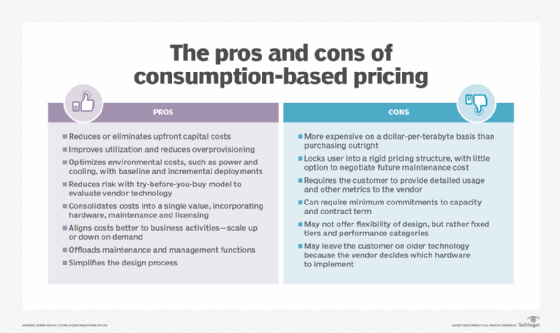Gorodenkoff - stock.adobe.com
Top 4 data storage trends for 2024
This year's storage trends include some technologies, such as artificial intelligence, that make platforms more secure and easier to manage, plus a potential reversal in the cloud.
Organizations need flexible, cheap storage that performs well. That might seem like too much to ask, but it's possible with advances in storage technologies.
The following data storage trends for 2024 cover ways vendors are working on improvements, as well as customer attitudes toward how they store data.
1. AI integration
The top data storage trend for 2024 is unquestionably the use of AI for storage management. Going forward, admins will increasingly use AI for tasks such as storage provisioning, capacity planning, and even backups and other forms of data protection such as failure predictions. AI is also sometimes helpful with workload migration tasks.
Over the coming year, various storage vendors will almost certainly introduce additional AI-powered features. Some of these AI-based capabilities will likely become standard storage features that nearly all vendors offer.
2. Better ransomware protection
Ransomware remains one of the biggest threats to an organization's data. All it takes is one bad mouse click for a user to trigger a ransomware infection that leads to massive data loss. As such, ransomware prevention must be among an organization's top priorities.
Just as storage vendors are using AI for storage management, they will likely also employ AI in the fight against ransomware. NetApp, for example, uses machine learning as a tool to detect and stop ransomware attacks. It monitors for known ransomware behaviors and for anomalous activity that might signal a ransomware attack. When it detects such patterns, the product stops the attack and can automatically restore data from known good copies.
Other vendors should follow suit and use machine learning to detect and respond to ransomware.
3. Companies change the way they use cloud storage
Several years ago, cloud services appeared to be the way of the future, and most organizations adopted a cloud-first approach to IT operations. Over the last couple of years, however, this data storage trend appears to be at least partially reversing itself, and cloud repatriation has become increasingly common.
Cost is perhaps the biggest factor, as more and more organizations realize the true cost of storing large data sets in the cloud. Some organizations are also bringing data back in-house in response to compliance mandates, performance issues or simply the need for greater flexibility.
At the same time, the storage as a service (StaaS) market continues to grow. Allied Market Research predicts that StaaS use will grow by 28.2% between 2023 and 2032.
One possible reason for these data storage trends is that while organizations are struggling with the cost of storing and using large data sets in the cloud, many employees continue to work remotely. StaaS gives those users an easy way to store, access and share files regardless of a user's geographic location.
4. Consumption-based pricing for on-premises workloads
The public cloud was adopted so quickly in part because it offered consumption-based pricing. Rather than making a large upfront investment in IT hardware and software, organizations could run their workloads on a cloud provider's hardware, paying only for the resources they consume.
The cost of operating in the cloud is driving many organizations to repatriate their workloads. Yet bringing a workload back in-house doesn't necessarily mean giving up on consumption-based pricing.

The idea of using consumption-based pricing in-house is not new. Long before the public cloud, IT departments used chargebacks to bill individual departments for the IT resources they consumed. Likewise, HPE has offered consumption-based pricing for data center hardware for several years.
This data storage trend seems to be gaining momentum as vendors such as Cisco, Dell, Pure Storage and Lenovo all offer consumption-based pricing.
Brien Posey is a 15-time Microsoft MVP with two decades of IT experience. He has served as a lead network engineer for the U.S. Department of Defense and as a network administrator for some of the largest insurance companies in America.








